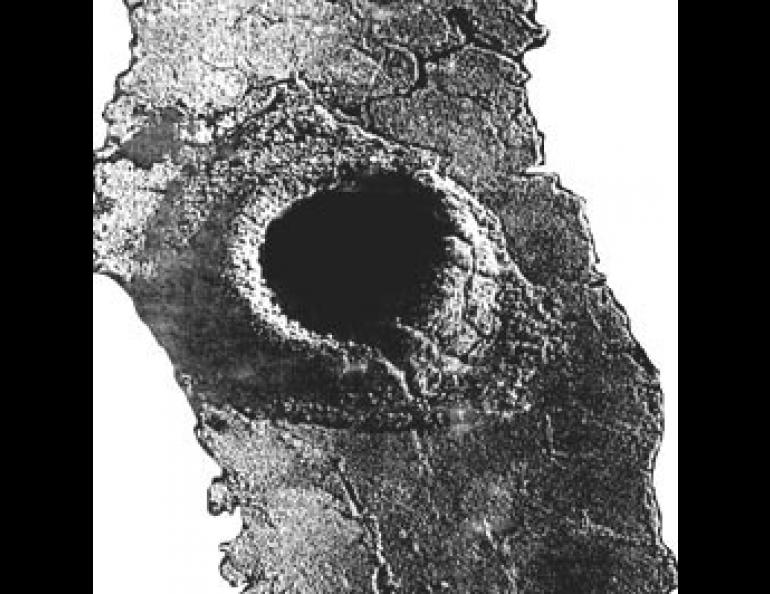
Pingos
It's a conical hill found in the Arctic and often has a crater lake in the center. It has been formed since the last ice age and can be found in sizes ranging from 50 feet to over a quarter of a mile across. It looks like a small volcano, but it's not. It's a pingo.
Of all the tricks that ice plays in the frozen ground of the north, the formation of pingos is one of the strangest. In reality, a pingo is nothing more than one of nature's (excuse me) pimples--an ice-cored hill, thrusting out of the surrounding terrain.
In the arctic tundra, a pingo begins when pools of standing water in low areas gradually expand to become a thaw lake. Water from the lake is prevented from percolating downward into the underlying permafrost, so the lake fills to the point where higher ground is breached, and the lake is drained. When this happens, permafrost encroaches on the lake bed from the sides, and the sediments which have accumulated in the center gradually freeze.
In time, the expanding ice forms an isolated mass, and as its volume increases, it pushes up the overlying tundra to begin formation of the pingo. When the feature has matured into its later stages of development, a summit crack or fissure often opens, exposing the ice core and allowing part of it to melt. This forms the crater lake.
Pingos which are formed in the open tundra of continuous permafrost zones are called "closed-system" pingos. In essence, this means that the pingo grows without the addition of further water from an outside source.
In discontinuous permafrost zones where there is some permeable ground "open-system pingos can form. These usually occur in alluvium-filled valleys of the Interior. An open-system pingo differs from the closed-system type in that it usually forms at the base of a south-facing slope where water is able to enter the subsurface system from the thawed areas upslope. In such a location, part of the water which contributes ice to the core is supplied under hydrostatic pressure to the growing mound beneath the surface layers.
Pingos can provide a welcome relief from the monotony of an Arctic plain. In addition to providing the traveler or hunter with a vantage point from which to scan the surrounding terrain, the well-drained surface layers of a pingo can support vigorous stands of poplar, birch or aspen, which will not grow in the wetlands below.





